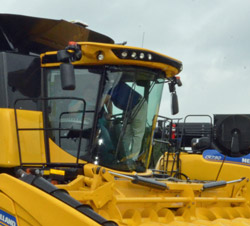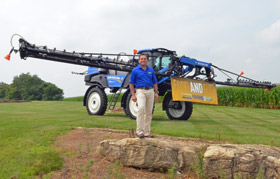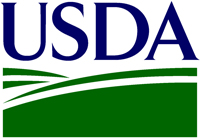 A newly launched website will allow people to audit an irrigation system completely from the field using mobile devices such as smart phones and tablets, according to a Texas A&M AgriLife Extension Service engineer.
A newly launched website will allow people to audit an irrigation system completely from the field using mobile devices such as smart phones and tablets, according to a Texas A&M AgriLife Extension Service engineer.
“This is a major upgrade to the current software used for landscape irrigation auditing and producing of irrigation schedules,” said Dr. Guy Fipps, AgriLife Extension irrigation engineer, College Station.
An irrigation audit is part of a systematic process for saving water by measuring the sprinkler systems’ output and scheduling water applications that match the seasonal changes in weather and plant water use, Fipps said.
“However, auditing is not a part of the irrigation licenses,” Fipps said. “The EPA provides a WaterSense Auditor Certification, which is administered in Texas by AgriLife Extension. To become an auditor in Texas, you must take AgriLife Extension’s auditing class and pass the certification exam.”
“Besides licensed irrigators, about 40 percent of the students have been landscape professionals, city conservation personnel, homeowners and Master Gardeners, and most have gone on to become licensed irrigators, irrigation technicians and irrigation inspectors,” he said.
The Texas Landscape Irrigation Auditing program began as simple software designed to run on personal computers. But as the training had to constantly evolve to meet the changing needs of Texas landscape and water-use restrictions, the software has had to expand its horizons as well, he said.
Cloud-based software refers to software designed to be used exclusively from a web browser such as Internet Explorer, Chrome or Firefox, said David Flahive, AgriLife Extension network manager and programmer, College Station. Computing becomes a service the user accesses rather than a program that is bought and loaded on a device such as a desktop or laptop.
For the user, cloud-based means the software can be used anywhere there is web access and with practically any modern brand, make or model computing device, Flahive said. Moreover, screen views adapt to the device being used, whether it be an iPhone with a 2-by-3 inch screen or a large tablet or a desktop monitor.
Fipps said access to the site will only be granted to students who have completed the Landscape Irrigation Auditing training class. However, one needn’t be a commercial irrigation manager to take the auditing class, he noted. The class is open to anyone who wants to learn how to better manage landscape irrigation.
By the end of August or earlier, Fipps and his colleagues plan to produce a similar cloud-irrigation site that will be homeowner friendly as part of the Water My Yard program.
 Need wireless productivity on your farm? Ayrstone is here to help. Bill Moffitt, Founder/President, was on hand at the recent Ag Media Summit to talk about their new products, including the new AyrMesh Cab Hub.
Need wireless productivity on your farm? Ayrstone is here to help. Bill Moffitt, Founder/President, was on hand at the recent Ag Media Summit to talk about their new products, including the new AyrMesh Cab Hub.













